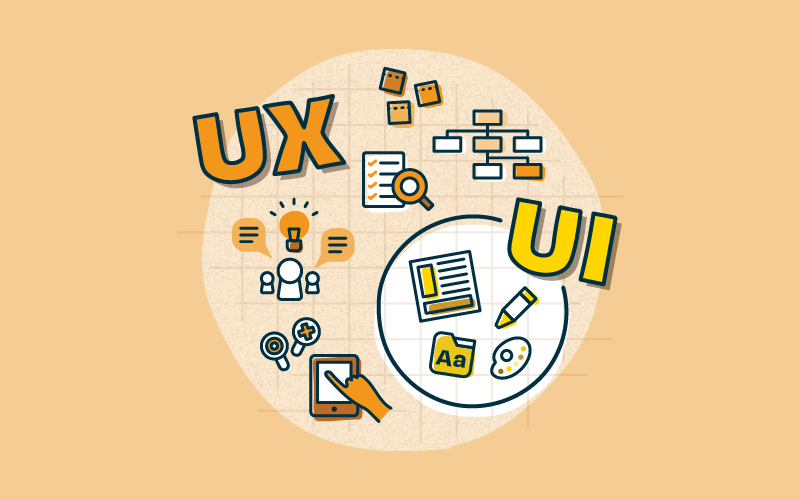When Bear Liu was teaching himself design, he struggled remembering concepts since English wasn’t his first language. To help, he started doodling. By drawing pictures that related to what he was learning, he found he could not only remember them better, he could understand and communicate more effectively too. Ever since, he’s used the power of drawings and pictures to relay information in ways people can use.
Bear gives examples of how visual communication can help design workplaces to relay information in a more memorable and usable way. It may only seem like a minor change, but the difference can be significant.
Bear’s background 🎤
Bear Liu is a Product Designer at Xero, an online accounting platform that’s used all over the world. He’s also a Design Mentor at Springboard and CareerFoundry, and an Apple Award-Winning podcast host at BearTalk.
His background is in science education. As a self-taught designer, Bear has helped a raft of large and small businesses with digital products over the last 16 years. His clients come from diverse backgrounds and industries across the globe. Bear's professional passions also carry over into his hobbies. Outside of work he enjoys reading, drawing, and producing videos & podcasts on tech and design.
Contact Details:
You can find Bear on LinkedIn, or listen to his podcast, BearTalk.
Unleash your visual superpower as a communication pro 🦸🏻
When it comes to addressing business challenges it is important to keep these three aspects in mind:
- Understanding - break down complex problems and solutions so everyone can understand.
- Memory - retaining information in your mind is difficult even with note taking.
- Communication- People relate to words differently, and the meaning of something can easily get lost in translation. This issue is more prevalent with remote work.
Bear Liu strongly believes that visual communication helps people understand, remember and communicate information more effectively. Why?
- It helps to focus. Pictures remove distractions and draw attention to where it’s desired.
- It’s a token. A picture is universal - a house or a smiley face means the same thing to people that speak different languages.
- Most people are visual thinkers. Studies have found humans are hard-wired to process visual information faster. We are better at storing information in images, rather than numbers and letters.
But what if I can’t draw? This is a common issue Bear finds when talking to people about this. It’s not about the quality of the drawing itself, it’s about what it means. By delivering a message through a picture, it becomes understandable. Many of Bear’s drawings only ever remain in draft form. Even simple doodles can have meanings that make concepts clear.
In his design work at Xero, Bear has used drawing and sketches to great effect in a range of instances:
- The accessibility tree was a complex, abstract system, but by drawing it (on a literal tree), and adding a few notes alongside it, the terminology became much more understandable.
- Sketching how customers work made it easier to describe how Xero could help them. It was much more memorable than writing it out in paragraphs.
- Wrapping the year in product design. A written summary of a year’s work is long-winded. Instead, Bear drew a tree and pinned key words, quotes and achievements to communicate the highlights.
- UX terminology explanations can be difficult for those outside the industry to comprehend. Bear challenged himself to share 1 minute videos that accompanied simple drawings to help colleagues understand them, and had rave reviews.
- Sketching notes is a great alternative to writing notes at conferences or meetings. Presenters can draw to help audiences follow along, and people in the audience themselves can also sketch their own notes.
Why it matters 🔥
Bear has adapted visual thinking to his own product design process and has seen a noticeable improvement in communication as a result.
People are busy - their brains are packed with all sorts of information, and they’re easily distracted by other things they have on their minds. By delivering information in a way that helps them to focus on it, remember and understand it, designers can achieve their ultimate goals.
As Bear also notes, drawing is fun. It’s much more rewarding than using words, as well as much more effective.
Bear used the example of his talk at UX New Zealand 2023 as a great place to use a drawing. Rather than follow along with his message by scribbling notes the whole way through, those in the audience could capture the biggest lessons easily in one simple drawing.
- First, Bear drew one stick figure to represent himself as a speaker. He drew three speech bubbles, where audience members could write the most notable points he said.
- Then he drew another stick figure, which represented the audience member listening to him. They had three thought bubbles, which people could populate with their biggest takeaways from the speech.
-
That one simple drawing is a template that can be used in any speech or meeting to remember the key points.








